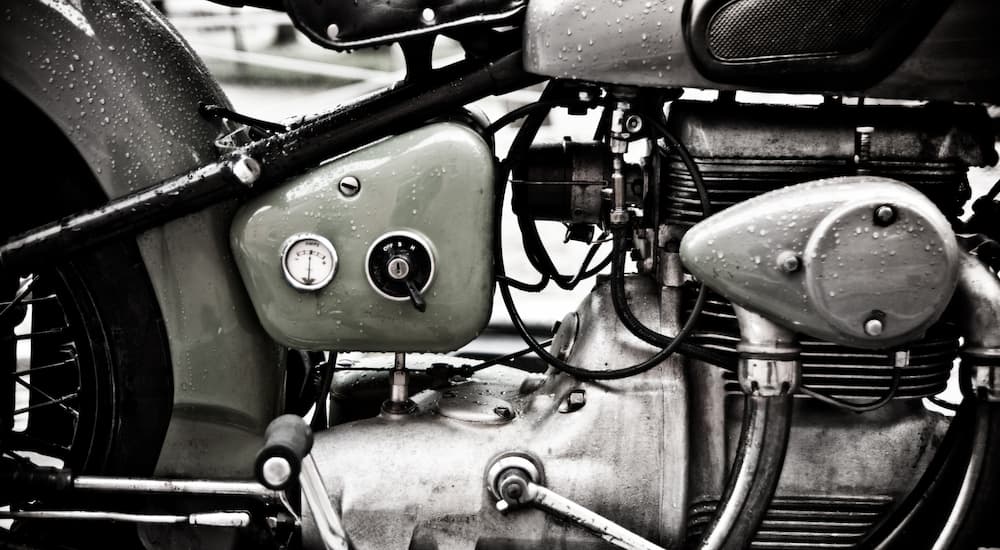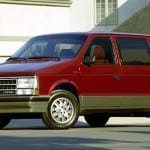There’s an insatiable need among us to always want more in our refusal to settle for the ordinary as we attempt to reach and experience the extraordinary. That need has defined humanity since the beginning of time and is what propels our society forward. It’s what inspired Henry Ford to put the world on wheels in the early 1900s, and it’s what led to the rise of the motorcycle and riders like you who are looking to satisfy that need for more at your local motorcycle dealer.
Henry Ford is credited with launching the American automotive industry, but who gets the credit for the motorcycle? A quick Google search offers several names, like Gottlieb Daimler and Wilhelm Maybach, who invented the gas-powered motorcycle in 1885. However, the origin of the motorcycle is dated several years prior, and that takes us to an American named Sylvester Howard Roper, who rarely gets the credit he deserves.
The Steam-Powered Bicycle (1869)
The automobile was designed to replace the steed as a more reliable and efficient means of transportation, a prime example of our insatiable need for more. Similarly, the rise of steam engines dramatically impacted worldwide transportation and soon met a crossroads with the bicycle. A young Vermont machinist named Sylvester Roper launched his career as an inventor long before he ever saw a steam engine or a railroad locomotive in person. However, his ideas ran wild, as he invented the hand-stitch sewing machine and a hot air engine before turning his attention to steam.
In 1869, Roper added a steam engine to a bicycle, creating the first steam-powered bike, the velocipede. Powered by coal instead of gasoline, the velocipede was a remarkable invention that could only lean to the side when turning because of its two-wheeled design. This likens it more to the modern motorcycle than the four-wheeled motorcycle invented by Gottlieb Daimler and Wilhelm Maybach in 1885.
Ironically, Roper never patented his design nor advertised his accomplishment, leaving many to assume he invented the bike out of practical necessity. As a result, Roper’s contribution to the birth of the motorcycle is shrouded in mystery and remains largely unknown, leaving Daimler and Maybach to earn most of the credit. However, as history goes, it’s not that cut and dry, and some German inventors also deserve some of that credit, as you’ll soon discover.
The Gas-Powered Bicycle (1885)
Gottlieb Daimler is credited as “the father of the motorcycle” for his work alongside Wilhelm Maybach to build a motorized bicycle. Daimler and Maybach didn’t set out to invent the motorcycle but were trying to find a practical way to test their first internal combustion engine. Their goal was to use the engine in vehicles, but their test run on a bicycle forever changed the future of transportation.
Known as the Daimler Reitwagen or “riding wagon,” Daimler’s motorcycle defies the standards of what we consider a motorcycle today and is likened more to a four-wheeler because of its four-wheeled design. However, there were no standards at the time, earning Daimler international praise for his invention, most notably the internal combustion engine and, by accident, the motorcycle. So, what was this first motorcycle like?
Daimler and Maybach set up shop in a garden shed behind Daimler’s house in 1882. They spent several years developing a single-cylinder engine designed for the automobile. Called the “grandfather clock engine,” the unique powerplant used a hot tube ignition with a platinum tube running into the combustion chamber where an external open flame heated it. With the engine mounted on rubber blocks, the powerplant churned out 0.5 horsepower and averaged 7 mph, a remarkable feat at the time.
The Reitwagen was only designed to test Daimler and Maybach’s internal combustion engine, allowing the inventors to finetune the powertrain as needed. For several months, the inventors did precisely that, updating the transmission for improved handling before finalizing the design. By 1886, the Reitwagen was abandoned just as quickly as it was adopted.
The First Production Motorcycle (1894)
Building a motorized bike was half the battle; popularizing it and putting it into production was another. German steam engineers Heinrich and Wilhelm Hildebrand teamed up with German inventor Alois Wolfmuller to bring the motorized bike to the masses. They designed a gas-powered bike with a two-cylinder four-stroke engine that churned out 2.5 horsepower and a maximum speed of 28 mph. A vast improvement over Daimler and Maybach’s design, the Hildebrand & Wolfmuller bike was noticeably more impressive.
Hildebrand and Wolfmuller were the first to use the word “motorcycle” to describe their invention, officially using the German word “Motorrad” in their marketing. The company put the motorcycle into production, building two thousand models between 1894 and 1897. Although the bike wasn’t a huge success, it made history as the first commercialized motorcycle, igniting a trend that couldn’t be stopped.
Coming to America: Indian Motorcycle (1900s) and Beyond
As the motorcycle gained a foothold worldwide, Americans George M. Hendee and Oscar Hedstrom jumped on the bandwagon and opened the Hendee Manufacturing Company in 1897. The company opened its first factory in 1901, igniting decades of growth with models like the first V-twin factory race bike (1906), the Indian Scout (1920), and the Indian Chief (1922). By this time, it was time to rebrand, and the Hendee Manufacturing Company renamed itself The Indian Motocycle Company in 1923 (note the absence of the “r” in the company name).
Indian’s incredible impact on American riders paralleled that of its rival, Harley-Davidson. Both manufacturers were renowned for their iconic designs, enticing different types of riders with unique styles and riding needs. This rivalry prompted Indian and Harley-Davidson to constantly evolve their lineups and ignited a fierce competition among competing manufacturers like Honda, Kawasaki, Suzuki, Ducati, BMW, and more.
The Demand for More
Today, every motorcycle traces its roots to the late 1880s when an American machinist set out to design a practical and efficient solution to get from Point A to Point B. Sylvester Roper used a steam engine, creating a motorized bicycle that deserves credit as the first motorcycle ever made, even with its rudimentary design. Roper’s goal was seemingly rooted in practicality, while Daimler’s and Maybach’s intention was vastly different as they needed a convenient base to test their internal combustion engine for the automobile. Hildebrand and Wolfmuller had another idea entirely, tasking themselves with getting their motorcycle into production for commercial use.
Each of these men contributed to the development of the motorcycle and its impact on transportation around the world. However, Roper, Daimler, Maybach, Hildebrand, and Wolfmuller also share something else with us––the insatiable need for more. Roper needed more convenience, just as Daimler and Maybach sought more power and capability. Likewise, Hildebrand and Wolfmuller needed more accessibility.
This demand for more fuels who we are, both past and present. Our insatiable desires for more speed, more capability, and more adventure define modern motorcycles today, whether you’re looking at a Ducati, BMW, Honda, Suzuki, a sport bike, touring bike, or a dual sport. This need and demand for more is the groundwork of who we are as riders and is an integral part of our history as it’s progressed us forward, year after year and mile after mile.



